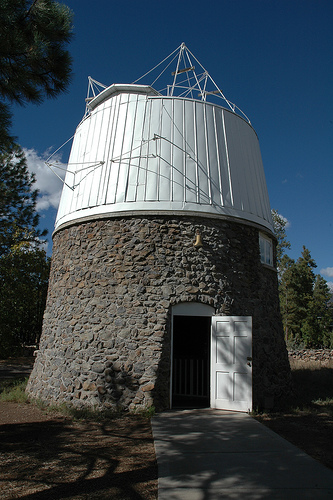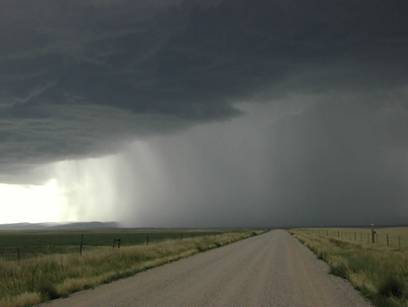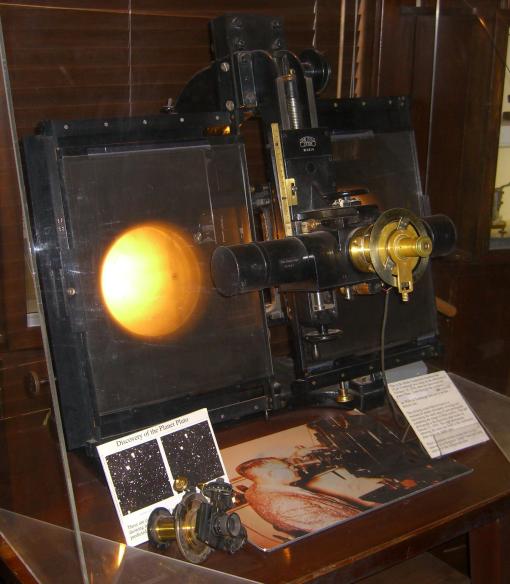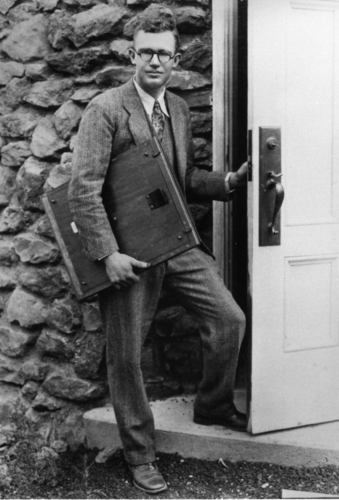From his own account, Clyde Tombaugh didn’t like living in Kansas. He’d moved from Streator, Illinois, with his family, at 16 – a tough age to move anywhere. Tenant farmers, the Tombaughs went where the farming was good, and Muron Tombaugh — Clyde’s father — believed they could do better for themselves in Kansas. But Clyde missed his extended family in Illinois and the nearby gangster hustle of Al Capone’s Chicago. This photograph dates from a few years before the Tombaughs’ arrival, but when they got there, Burdett was still a tiny little town in the middle of nowhere — Pawnee County, Kansas. And it still is today.
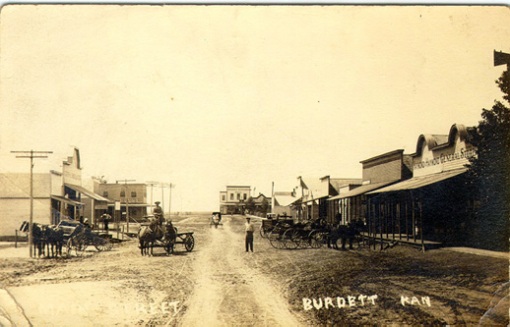
The ten-minute drive south to Burdett for supplies takes him past a dozen tenanted farms. It is flat here, almost exactly flat. The sky is vast, open in all directions. Early on this summer morning the sky is a fruitful, endless blue. A mile from town the first shabby houses appear: hard-packed yards under the sunstruck vacancy. Laundry plunging on the lines. A girl runs a wild circle around a fresh stump while her brother looks on from where he sits atop it like a cat, full of opinion but saying nothing. Then he comes to the railroad tracks and the tiny depot, where the baggage cart stands casting its shadow on the unpopulated platform.
It is so empty to Clyde. He is still not really used to it.



